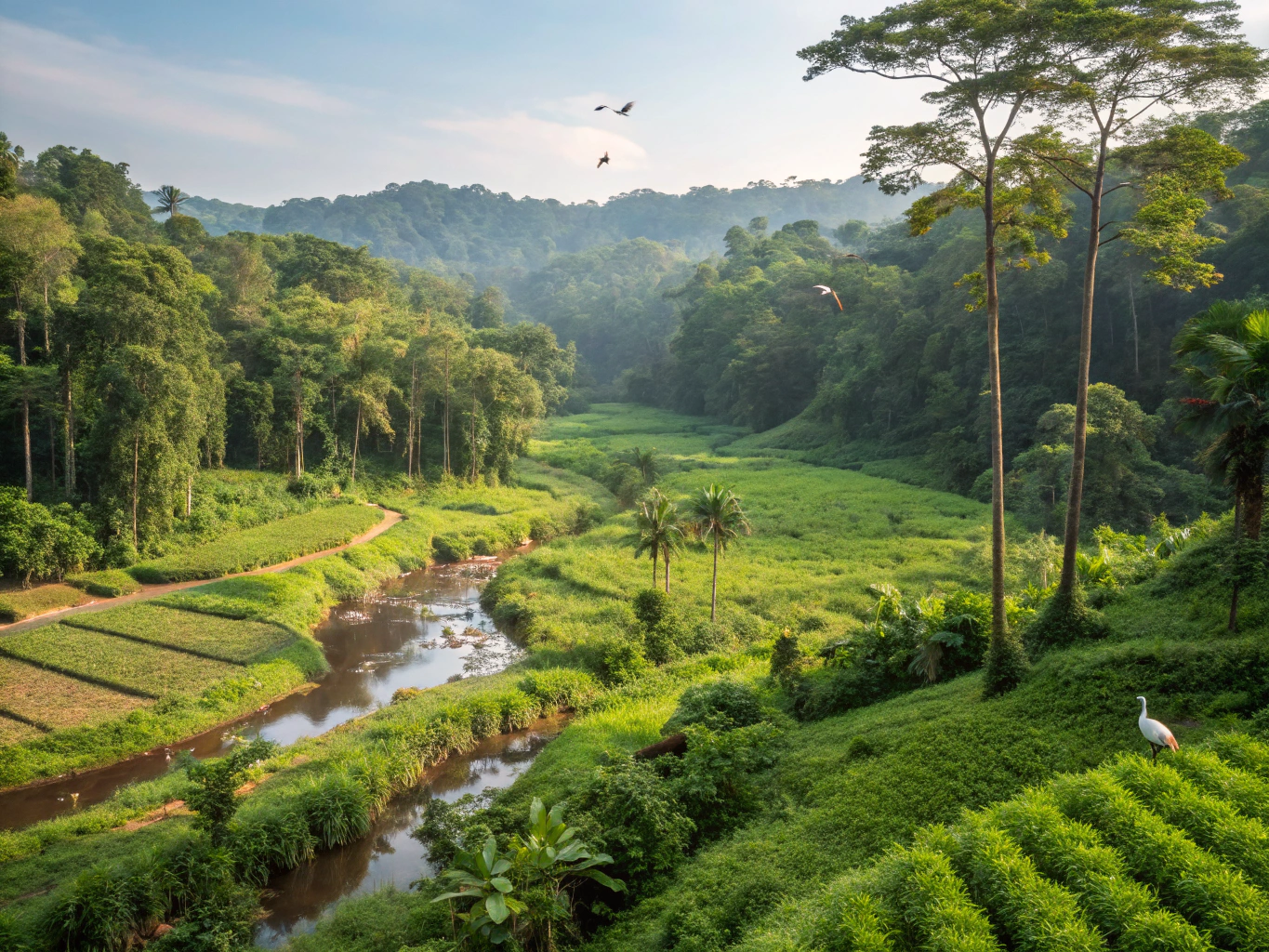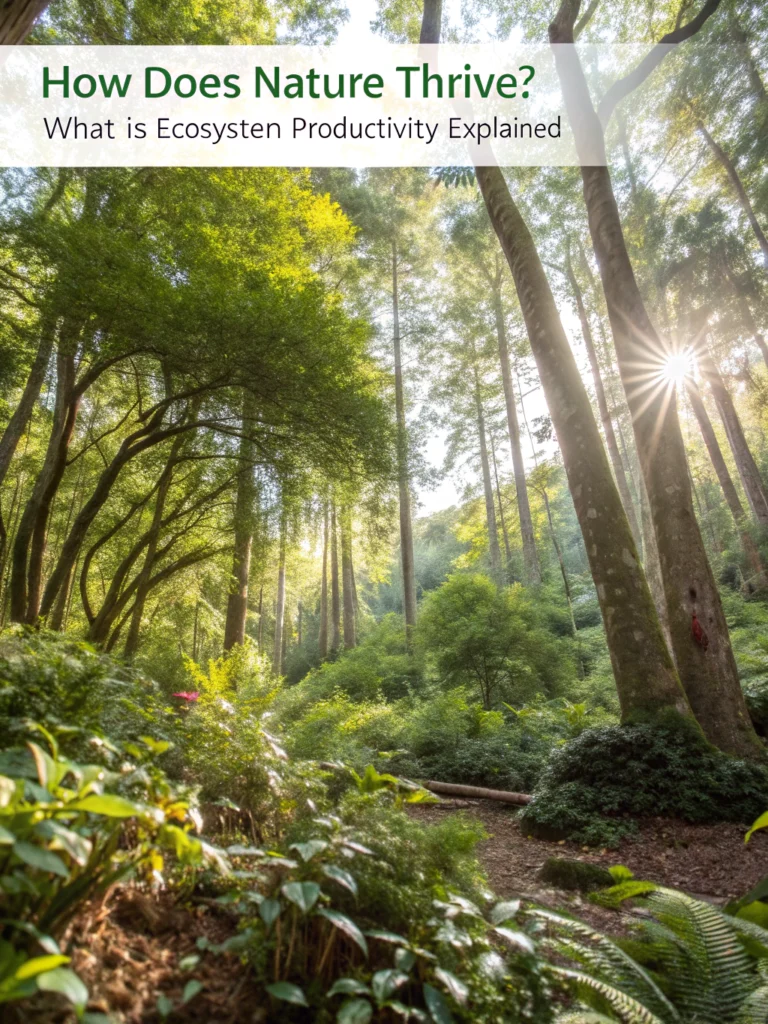How Does Nature Thrive? What Is Ecosystem Productivity Explained
Have you ever wondered what is ecosystem productivity? While it sounds technical, the truth is that it encompasses a simple yet profound concept that affects every living organism on our planet. Understanding ecosystem productivity helps us grasp how nature thrives, ensuring a balance in our environment. This article dives into the intricacies of ecological productivity, examining primary productivity in nature, and exploring how ecosystems maintain their health and balance.
What Is Ecosystem Productivity?
At its core, ecosystem productivity refers to the rate at which energy is converted by photosynthetic and chemosynthetic autotrophs to organic substances. Simply put, it’s about how efficiently ecosystems convert sunlight—and nutrients—into plant biomass. This process is crucial because it supports the entire food web, from herbivores to apex predators.
The Three Types of Ecosystem Productivity
-
Primary Productivity
Primary productivity represents the energy captured by photosynthetic organisms, like plants and algae. It’s the starting point of energy flow in an ecosystem. In other words, primary productivity in nature can be thought of as the plants' job of making their own food using sunlight, carbon dioxide, and water. -
Secondary Productivity
This refers to the generation of biomass by heterotrophic organisms (like animals) that consume plant matter. If primary producers are the chefs, secondary producers are the diners, expanding their energy into diverse forms. -
Tertiary Productivity
Tertiary producers include top predators. Their productivity is affected by the amount of energy transferred through the food web, and it ultimately influences the overall balance of an ecosystem.
How Ecosystems Thrive
So, how do ecosystems thrive? It’s all about balance. Healthy ecosystems maintain a constant flow of energy:
- Energy Flow: Understanding ecosystem energy flow is essential. It dictates how energy moves from one trophic level to another, forming an intricate web of life. Solar energy fuels photosynthesis, kicking off the cycle.
- Biodiversity: A diverse range of species creates resilience within an ecosystem. High biodiversity leads to higher productivity, thanks to varied interactions between species.
- Nutrient Cycling: Nutrients like nitrogen and phosphorus are cycled through the ecosystem. Plants take them up from the soil, and when animals consume plants (or when they die and decompose), those nutrients return to the soil.
Ecosystem Health and Balance
The health of our ecosystems directly impacts our lives. Problems like deforestation, pollution, climate change, and invasive species can drastically impact ecosystem health and balance. If one part of the system breaks down, it can have a ripple effect on the entire ecosystem.
In fact, with ecological productivity 2025 looming, it's crucial we grasp these concepts to implement strategies that combat environmental degradation.

Understanding Ecosystem Productivity: Practical Insights
So how can we contribute to enhancing ecosystem productivity? Here are some practical actions:
- Support local biodiversity by planting native species in gardens.
- Reduce single-use plastics and pollution to preserve our waterways.
- Participate in tree planting initiatives to combat deforestation.
FAQs about Ecosystem Productivity
What drives ecosystem productivity?
The primary driver is energy from the sun, which fuels photosynthesis in plants.
How does climate change affect ecosystem productivity?
It can lead to species loss, altered plant growth patterns, and nutrient cycling disruption, which diminish productivity.
What role do humans play in ecosystem productivity?
Human activities can both harm (e.g., pollution, deforestation) and help (e.g., conservation efforts, sustainable farming).
In conclusion, understanding what is ecosystem productivity lays the foundation for appreciating the intricate web of life. The balance of energy flow, biodiversity, and nutrient cycling is essential for thriving ecosystems. Let's dive deeper into maximizing our productivity, not just in life but in our relationship with nature. Check out the comprehensive guides from eBookBusinessClub to supercharge your efficiency while being mindful of our environment:
To summarize, we are all interconnected, and by understanding the principles of ecosystem productivity, we can all play a part in ensuring our planet remains a thriving home for generations to come. Let's make a conscious effort to contribute positively to our ecosystems while enhancing our personal productivity.

